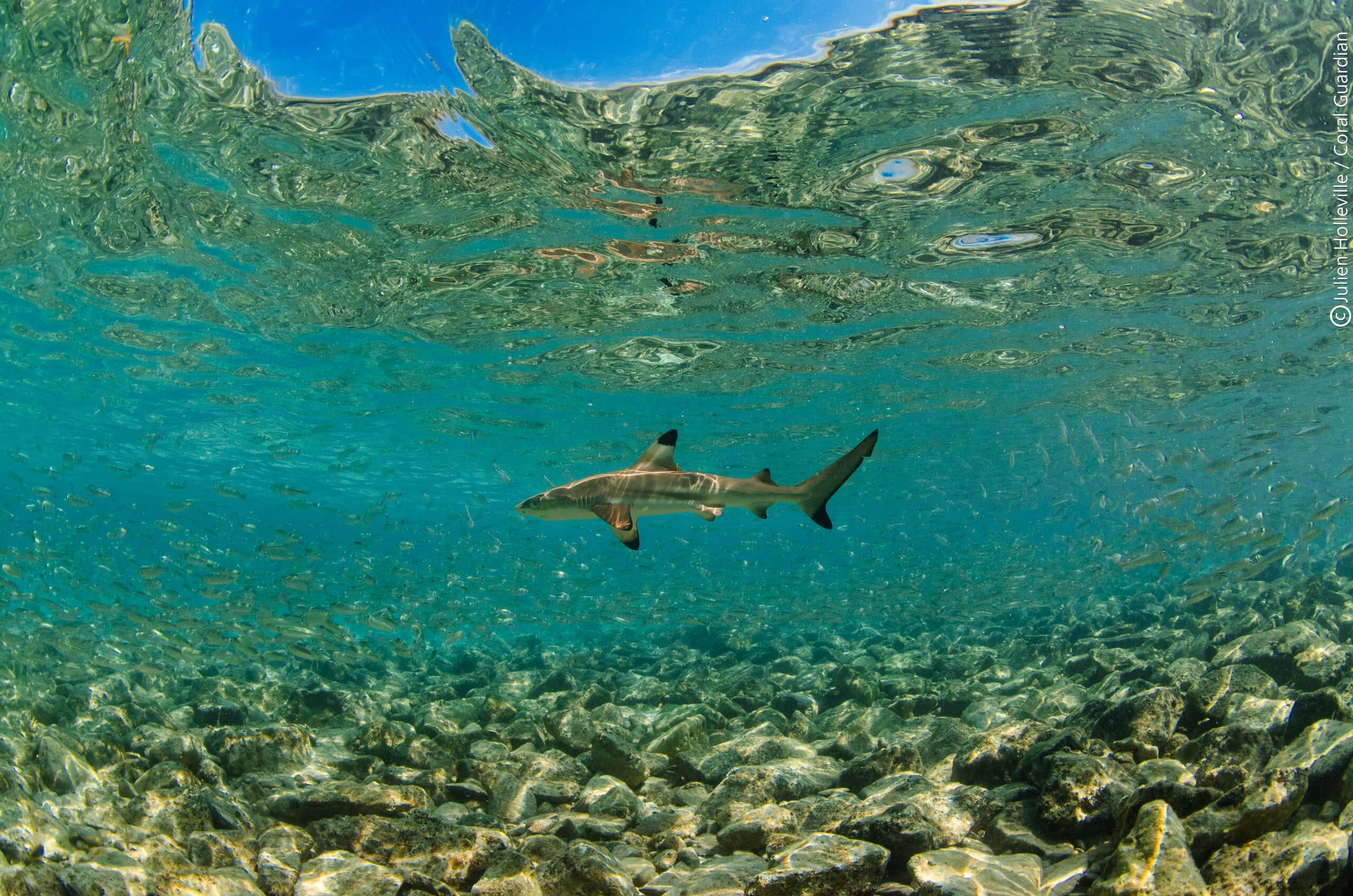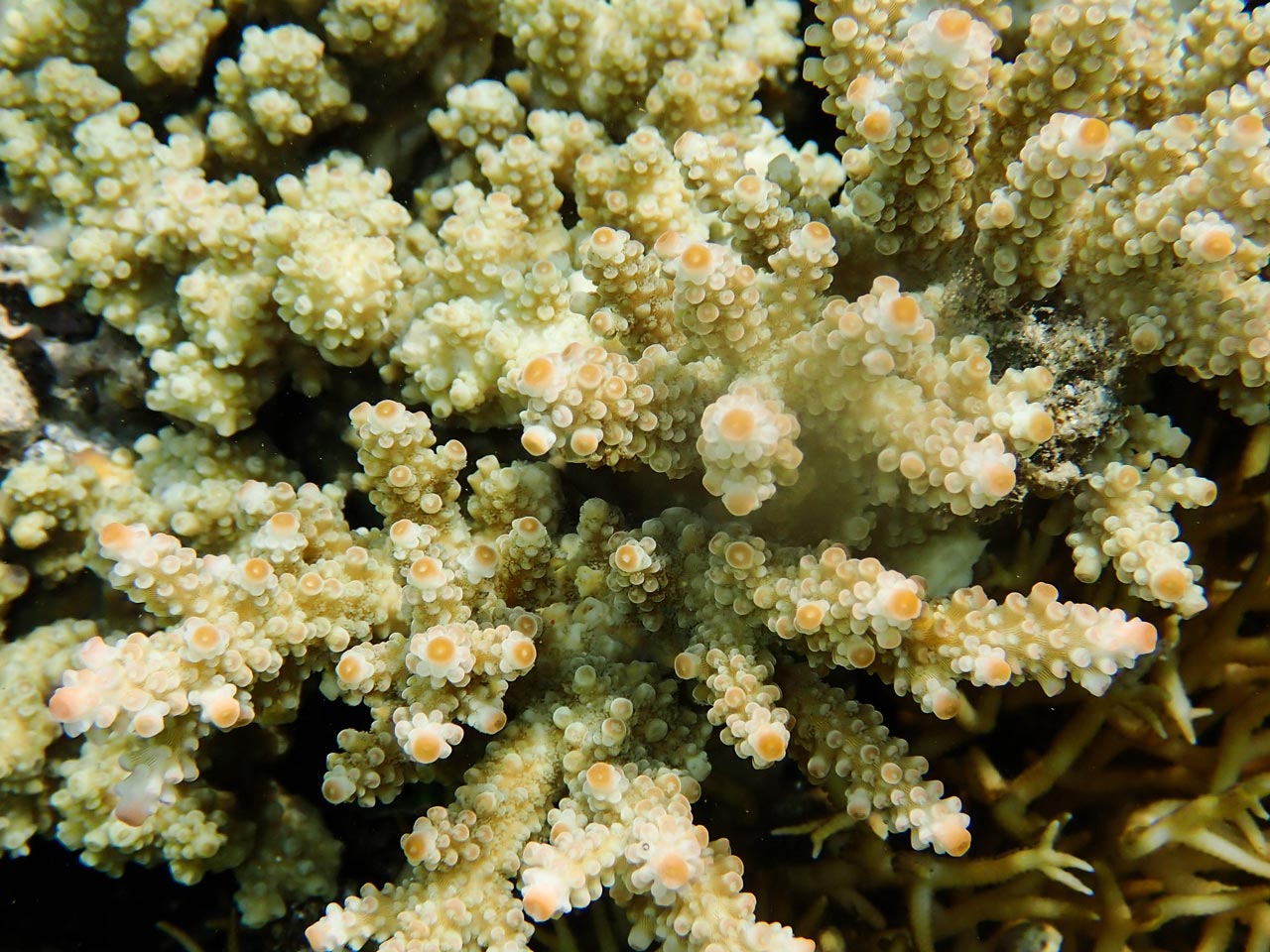Unexpected fish biodiversity on coral reefs unraveled by environmental DNA

Reef fish: an exceptional biodiversity
Coral reefs are often referred to as the tropical rainforests of the seas due to their staggering richness and diversity of life. Yet, who would have guessed that reef ecosystems – covering less than 1% of the ocean floor – host the greatest diversity of fish worldwide [1]? Reef fishes represent key actors on coral reefs – moving and recycling substantial amounts of nutrients that corals and other benthic communities further use to sustain their own growth [2]. Moreover, through their feeding habits, reef fishes support healthy reefs by regulating the biomass of macroalgae – which compete with corals for nutrients, light and space [3]. Recent studies underlined the high level of diversity among fish families feeding on plankton as one potential factor driving the exceptional biodiversity measured in the Coral Triangle due to geomorphological and geological processes [4].
How can we measure this exceptional biodiversity?
While reef fishes support important ecological functions on coral reefs, our knowledge about their biological diversity and biogeography remains incomplete. For example, a number of fish species, residing in coral colonies (i.e. crypto-benthic, meaning they live on the substrate and camouflage with the environment), are extremely hard to sample and to survey without harming the coral colonies. And yet these species account for more than half of fish diversity on coral reefs [5].
Over the past decades, recent advances in molecular biology and sequencing techniques offered scientists new opportunities and tools to monitor biodiversity in aquatic ecosystems. Environmental DNA (eDNA) based approaches provide ways to survey hidden biological diversity [6]. This non-invasive technique – born out of an urgent need to detect and monitor invasive aquatic species – consists in collecting environmental samples (i.e. water, sediments, etc) to collect genetic fingerprints of species that were present in the studied environment over the past days or weeks (7-21 days depending on environmental conditions [7]).
How can DNA be collected?
Organisms release DNA (genetic material) in their environment under the form of cellular materials such as hair, skin, excrements, mucous, gametes, etc – that are carried away by hydrological and atmospheric processes. eDNA has been successfully used to monitor microbial diversity, particularly in aquatic ecosystems [8]. However, its ability to provide a thorough assessment of biological diversity and distribution of macro-organisms such as reef fish across large spatial scales – encompassing numerous ocean basins – had to be tested.

FIG 1. Infographic showing the step by step and utility of eDNA to study marine environments. Credits: Rachel Strader / Knowable.
A large-scale scientific study on the diversity of reef fish
A group of international researchers undertook a global survey of reef fish diversity over 2 years and 3 months across the Indian, Pacific and Atlantic Oceans by using eDNA sampling based approaches and compared this method to standardized visual surveys carried out by scientific divers over 13 years, that were compiled in the database Reef Life survey. This study, led by Laetitia Mathon and recently published in Proceedings of the Royal Society London B, investigated 226 environmental water samples collected in 100 sites across five tropical regions (Fig 2).

Among their results, the team found that when compared to underwater censuses retrieved from the databases, the environmental DNA approach detected an overall 16% greater fish diversity including 25% more reef fish families associated with pelagic and crypto-benthic taxa. In contrast, visual surveys pointed out more fish species than eDNA in 47 shared families – which the researchers explained by sequencing issues and incomplete detection in the environment.
Conclusion… Can DNA be used to measure fish diversity on a reef?
Moving forward, although eDNA approaches still present some limitations, this study is an excellent example of the importance and relevance of combining visual surveys and to fine tune molecular tools in order to unravel and monitor the biological diversity and spatial distribution of aquatic and terrestrial macro-organisms. These studies must take place now more than ever, as global change and local human activities continue to threaten the world’s biodiversity.
Cited bibliography:
Mathon L., Marques V., Mouillot D., Albouy C., Andrello M., Baletaud F., Borrero-Pérez G.H., Dejean T., Edgar G. J., Grondin J., Guerin P.E., Hocdé R., Juhel J.B., Kadarusman, Maire E., Mariani G., McLean M., Polanco F. A., Pouyaud L., Stuart-Smith R. D., Sugeha Hagi Y., Valentini A., Vigliola L., Vimono I. B., Pellissier L. and Manel S. (2022) Cross-ocean patterns and processes in fish biodiversity on coral reefs through the lens of eDNA metabarcoding. Proc. R. Soc. B.2892022016220220162 http://doi.org/10.1098/rspb.2022.0162
[1] Cowman PF, Bellwood DR. (2013) The historical biogeography of coral reef fishes: global patterns of origination and dispersal.J. Biogeogr.40, 209–224.
[2] Allgeier, J. E., Layman, C. A., Mumby, P. J., & Rosemond, A. D. (2014). Consistent nutrient storage and supply mediated by diverse fish communities in coral reef ecosystems. Global Change Biology, 20(8), 2459-2472.
[3] Burkepile, D. E., & Hay, M. E. (2008). Herbivore species richness and feeding complementarity affect community structure and function on a coral reef. Proc. Natl Acad. Sci, 105(42), 16201-16206.
[4] Siqueira AC, Morais RA, Bellwood DR, Cowman PF. (2021) Planktivores as trophic drivers of global coral reef fish diversity patterns. Proc. Natl Acad. Sci. USA118, e2019404118. (doi:10.1073/pnas.2019404118)
[5] Brandl SJ, Goatley CHR, Bellwood DR, Tornabene L. (2018) The hidden half : ecology and evolution of cryptobenthic fishes on coral reefs. Biol. Rev. 93,1846–1873. (doi:10.1111/brv.12423)
[6] Pawlowski, J., Bonin, A., Boyer, F., Cordier, T., & Taberlet, P. (2021). Environmental DNA for biomonitoring. Molecular ecology, 30(13), 2931–2936. https://doi.org/10.1111/mec.16023
[7] Dejean, T., Valentini, A., Duparc, A., Pellier-Cuit, S., Pompanon, F., Taberlet, P., and Miaud, C., (2011) Persistence of environmental DNA in freshwater ecosystems: PLoS ONE, v. 6, no. 8, e23398, doi:10.1371/journal.pone.0023398
[8] Harrison JB, Sunday JM, Rogers SM. (2019) Predicting the fate of eDNA in the environment and implications for studying biodiversity. Proc. R. Soc. B 286,1–9. (doi:10.1098/rspb.2019.1409)
Ces articles pourraient vous intéresser

Sponsor spotlight : Guillaume from 3EConcept
Tell us a bit about yourself 🙂 Rather in responsible mode, I am an enthusiastic and persistent person. I founded the 3E concept group in…
22 June 2022
Sponsor Spotlight : Corinna Bohle of DAVOSA
Tell us a bit about yourself 🙂 Hi, my name is Corinna Bohle. I‘m the managing director and owner of DAVOSA, an independent Swiss watch brand…
22 June 2022
Are mineral UV filters used in sunscreens less harmful to coral reefs?
Swimmers can choose sunscreens with chemical (organic) UV filters or mineral (inorganic) UV filters. The latter are natural particles, either zinc oxide (ZnO) or titanium…
22 June 2022
The link between the skeleton of reef-building corals and past climatic ocean conditions
Scleractinian corals and reef formation Coral reefs’ structures are built thanks to the skeleton of Scleractinian corals. These corals begin their life cycle as motile…
22 June 2022
